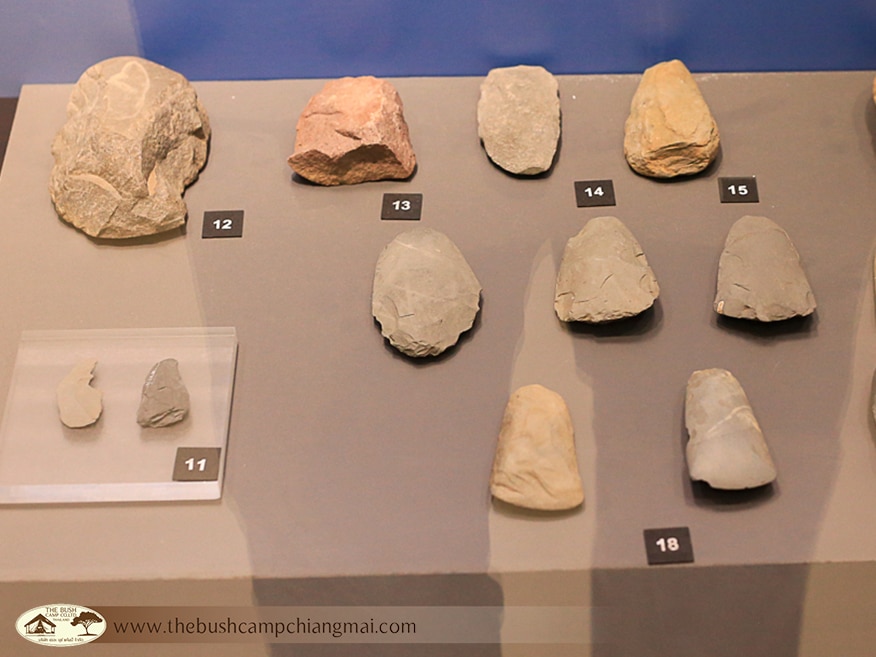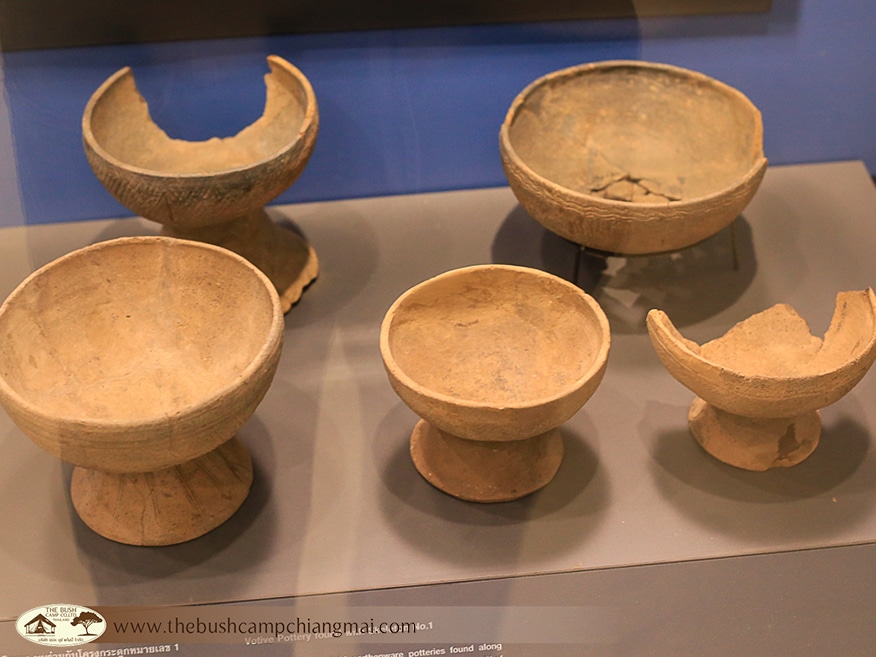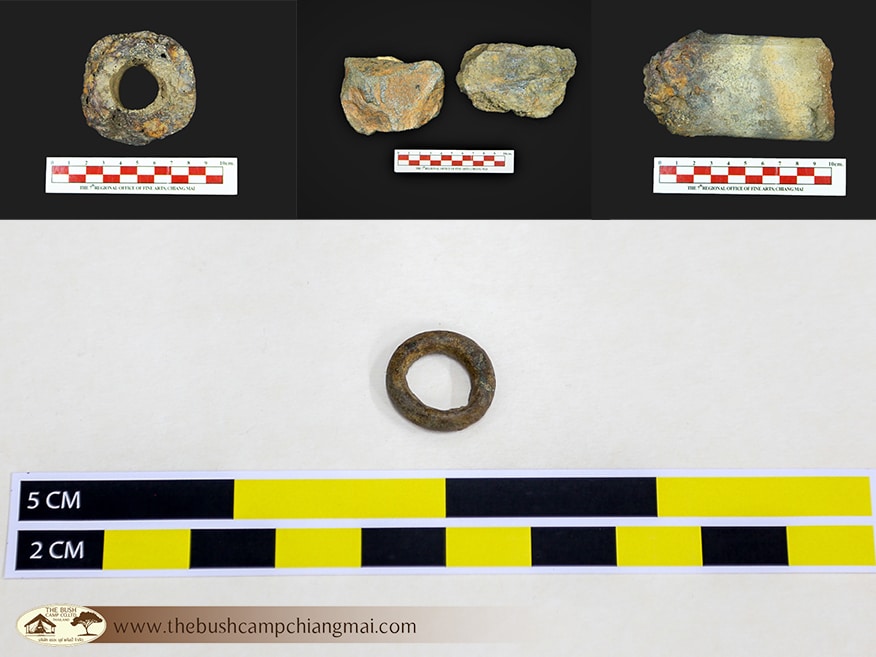Prehistory and archaeology

As history describes the part of the past known from texts or inscriptions, prehistory includes all the periods of the past before history and without written proof.
During prehistory, the first communities were formed and slowly maturated, through different phases of evolution.
Sometimes this included changes in population, to become the historical, and later on, modern societies of today.
The ground of contemporary cultures of Thailand are to be found in its prehistoric past, which we have to study to get a better understanding of our environment and of our society.
Since there are no texts, the only way to gain knowledge of prehistory is through archaeological excavations.
The inhabitants of prehistoric settlements have left behind many remains, now buried under the soil and vegetation.
To retrieve these remains allows us to reconstruct tentatively, through interpretation, the everyday life of prehistoric people, their technology and its evolution, their influence upon the environment, and enables us to have an idea of the size and structures of their social groups.
The first step is the field survey, which enables us to locate and identify archaeological sites from surface remains such as potsherds or stone tools.
The next step is the excavation, which must be conducted extremely carefully, by successive scrapings of the levels.
The objects themselves, their relative position and distribution in the past is important.

Horizontally, the traces of structures and the concentration of a particular type of remains can provide information about the areas of habitation and of specialized craft activities.
Vertically, a section made through the occupational levels (stratigraphic section) will give evidence of chronological succession.
Recording the data has to be done very precisely and scientifically: the archaeologist, using photographs, drawings, and depth measurements, must represent every object or feature in its exact position in three dimensions for a later reconstruction.
Excavation is quite a destructive activity with no return, “like a book, the pages of which one would tear off as reading along”.
The stratigraphy be carefully mapped, in order to represent each level in chronological succession.

Then the remains themselves must be studied through photography, drawing, classification, scientific analysis, which will allow comparisons, dating and a reconstruction of the technology, the way of life, the environment, etc.
Finally, the results and synthesis of such research will be offered to the public through books and exhibitions.




